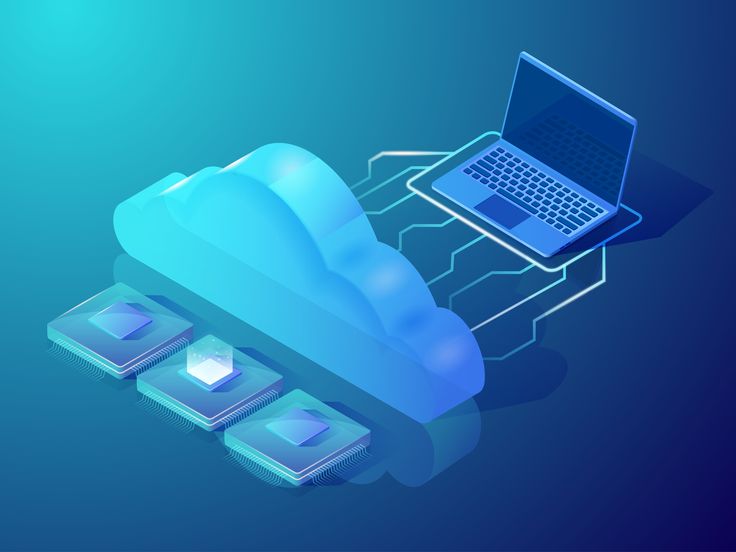Recent Blog
Check on Our Social Media
All Our Blogs
What Is Cloud Computing? A Beginner’s Guide to the Future of Digital Infrastructure
In the rapidly evolving world of technology, cloud computing has emerged as a revolutionary force that is transforming how businesses and individuals access and manage digital resources. Whether it’s streaming a favorite show on Netflix, backing up files to Google Drive, or building apps using Amazon Web Services, cloud computing plays a crucial role in our digital lives.
But what exactly is cloud computing? Why has it become such a game-changer for companies and consumers alike? In this beginner-friendly blog, we’ll explore what cloud computing is, how it works, the different service models, real-world examples, and the key benefits that make it indispensable.
Cloud Computing Explained
Cloud computing refers to the delivery of computing services—including servers, storage, databases, networking, software, analytics, and intelligence—over the internet (“the cloud”). Instead of buying, owning, and maintaining physical data centers or servers, users can rent access to these services from a cloud service provider on a pay-as-you-go basis.
This model eliminates the need for costly infrastructure and offers unparalleled flexibility. Whether you’re an individual uploading vacation photos or a multinational corporation running mission-critical applications, cloud computing offers solutions that scale with your needs.
Everyday Examples of Cloud Computing:
Google Photos: Store and access your photos from any device, anywhere in the world.
Netflix & Spotify: Stream video or music without needing local downloads.
Dropbox & Google Drive: Share and collaborate on files in real time.
Key Benefits of Cloud Computing
Cloud computing is not just a passing trend—it’s a foundational shift in how technology is consumed. Here are some of the biggest advantages it brings to the table:
1. Scalability and Flexibility
With cloud computing, businesses can easily scale resources up or down depending on their needs. Tools like AWS Auto Scaling allow automatic adjustment of computing power, helping companies handle changes in demand efficiently.
2. Cost Efficiency
Instead of investing in expensive hardware, software licenses, and maintenance, organizations only pay for the resources they use. This pay-as-you-go model significantly lowers operational costs, especially for startups and small businesses.
3. Global Accessibility
Cloud computing makes your data and applications accessible from any device with an internet connection. This enables remote work, seamless collaboration, and a more agile workforce.
4. Enhanced Security
Top-tier cloud providers offer robust security features such as encryption, firewalls, identity and access management, and automated backups. Regular audits and compliance with international standards also ensure the integrity of your data.
5. Automatic Updates
Cloud platforms frequently roll out software and security updates, ensuring users always have access to the latest features and patches—without manual intervention.
Types of Cloud Computing Service Models
Cloud computing services are generally categorized into three main models, often referred to as the cloud computing stack because they build on top of one another:
1. Software as a Service (SaaS)
SaaS allows users to access software applications hosted on the cloud through a web browser without installing or managing the software on local devices. It’s ideal for businesses looking for ready-to-use tools with minimal setup.
Benefits of SaaS:
Easy access via internet browsers
No software installation or maintenance
Subscription-based pricing (pay-as-you-use)
Ideal for remote work and global teams
Examples of SaaS Applications:
Google Workspace (Docs, Sheets, Gmail)
Dropbox
Salesforce (CRM)
Zoom & Microsoft Teams
Slack & Trello
As of a recent study, businesses now use an average of 16 SaaS applications—a number that continues to rise.
2. Platform as a Service (PaaS)
PaaS offers a cloud-based environment where developers can build, test, and deploy applications. The platform provides the infrastructure and tools—such as databases, development frameworks, and runtime environments—so that developers can focus solely on code.
Benefits of PaaS:
Accelerated development time
Built-in scalability and monitoring
Supports multiple programming languages
No need to manage infrastructure
Examples of PaaS Platforms:
Google App Engine
AWS Elastic Beanstalk
Heroku
Microsoft Azure App Services
Red Hat OpenShift
This model is especially popular among startups and agile teams that need to innovate quickly without the hassle of managing servers.
3. Infrastructure as a Service (IaaS)
IaaS delivers virtualized computing resources over the internet, including servers, storage, and networking. It gives businesses complete control over their infrastructure while outsourcing the physical hardware and maintenance to a cloud provider.
Benefits of IaaS:
Full control over computing environment
Scalable infrastructure
On-demand provisioning
Reduced capital expenditure
Popular IaaS Providers:
Amazon EC2 (AWS)
Google Compute Engine (GCP)
Microsoft Azure
IBM Cloud
DigitalOcean
This model is ideal for enterprises that need customizable computing environments without owning physical hardware.
Comparing SaaS, PaaS, and IaaS
| Feature | SaaS | PaaS | IaaS |
|---|---|---|---|
| End User Focus | Application users | Developers | System Administrators |
| Control Level | Minimal | Medium | Full Infrastructure Control |
| Example Use | Email, CRM, Video Conferencing | App Development, Testing | Hosting websites or databases |
Real-World Use Cases of Cloud Computing
Cloud computing is deeply embedded in modern life and business. Here are some notable examples:
1. Netflix
Netflix uses AWS to deliver seamless streaming services to millions of users globally. Its scalable infrastructure allows Netflix to manage spikes in usage, especially during peak hours or new releases.
2. Google Drive
This widely used SaaS solution allows users to store, access, and collaborate on files from any device. It is a prime example of how cloud computing supports education, business, and personal use.
3. VMware’s Disaster Recovery-as-a-Service (DRaaS)
VMware leverages the cloud to offer flexible disaster recovery solutions. This ensures data continuity and fast recovery in case of system failures or cyber incidents.
4. Heroku
Heroku is a PaaS platform that simplifies application deployment for developers. It supports multiple programming languages and automates many of the administrative tasks associated with app management.
The Impact of Cloud Computing on Modern Business
With the shift towards digital transformation, more organizations are adopting cloud-based solutions to enhance agility, reduce costs, and foster innovation. In sectors like healthcare, finance, education, and logistics, cloud computing is enabling faster decision-making, better customer experiences, and improved operational efficiency.
Conclusion: The Future Is in the Cloud
Cloud computing has redefined how we access technology. From storage and software to complex infrastructure, everything is now just a few clicks away. It offers powerful advantages for users and businesses—flexibility, cost savings, security, and global access being just a few of them.
As this field continues to evolve with innovations like serverless computing, edge computing, and AI-powered cloud platforms, the demand for cloud professionals is skyrocketing. Whether you’re a student, developer, or entrepreneur, understanding cloud computing is an essential step toward thriving in the digital age.
References:
https://www.cleo.com/blog/knowledge-base-what-is-cloud-computing
https://azure.microsoft.com/en-us/resources/cloud-computing-dictionary/what-is-cloud-computing
https://blog.devgenius.io/introduction-to-cloud-computing-f2ff10df8b69
https://builtin.com/articles/cloud-computing-examples
https://medium.com/@hugo-humbert/case-study-how-netflix-leverages-cloud-computing-for-success-6964283e1b6e
Need help developing cybersecurity policies for your organization? Contact us, we can guide you through the assessment, development, and implementation process tailored to your specific needs and industry requirements.
Location
Nashik | Mumbai | Bengaluru | Dallas
contactus@quasarcybertech.com
Call Now
+91 97306 91190
Quick Links
Our Offerings
Copyright 2025 © All Right Reserved | QLeap Education & Trainings






